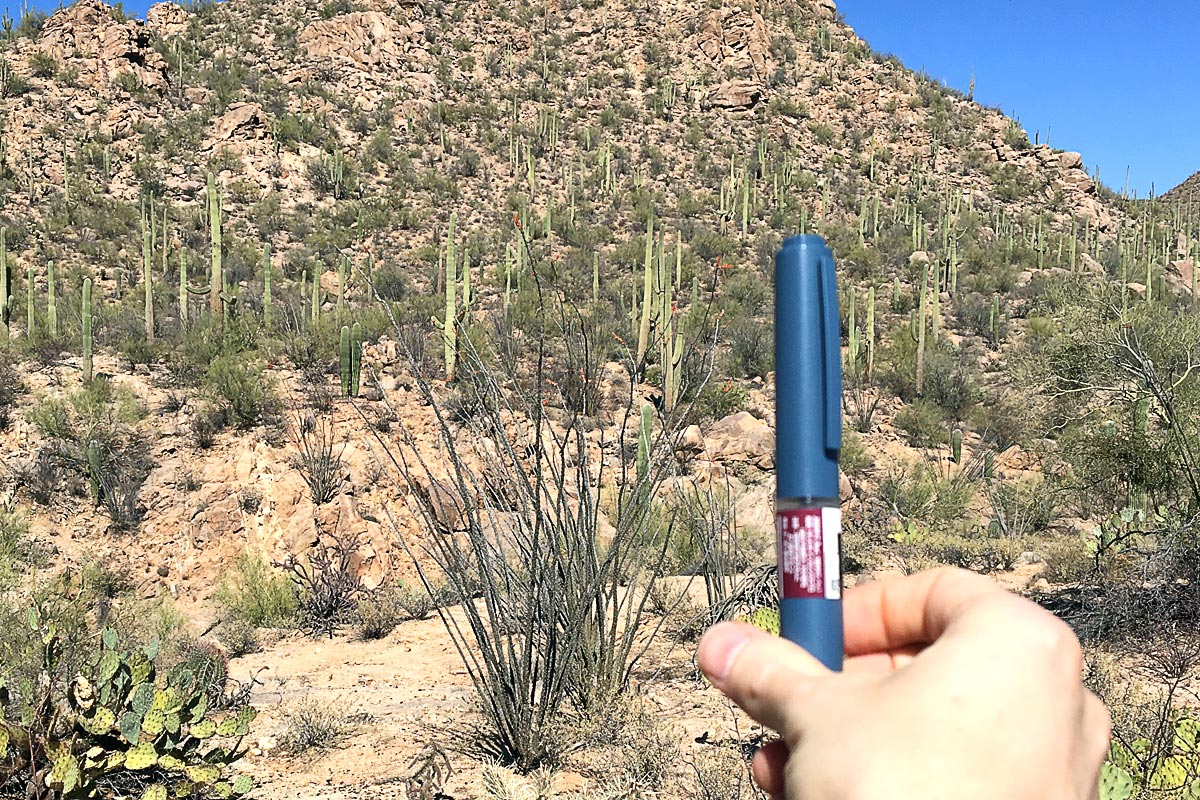
6th and Speedway on Christmas Day
It seemed like things were gonna go my way
—Cracker
Those Roadrunner cartoons are no exaggeration: the Sonoran Desert in Arizona really is fully of crazy-armed cacti and yes, roadrunners sprinting comically across the lonesome grey roads. The best way to see it all is by visiting the amazing Saguaro National Park on the outskirts of Tucson.
The saguaro (“sah WA ro”) cactus came to the area about 8,000 years ago – interestingly, after humans did. Saguaro (originally signed as “Sahuaro”) was established as a National Monument by Herbert Hoover in the last days of his beleaguered presidency and was elevated to National Park status in 1994.
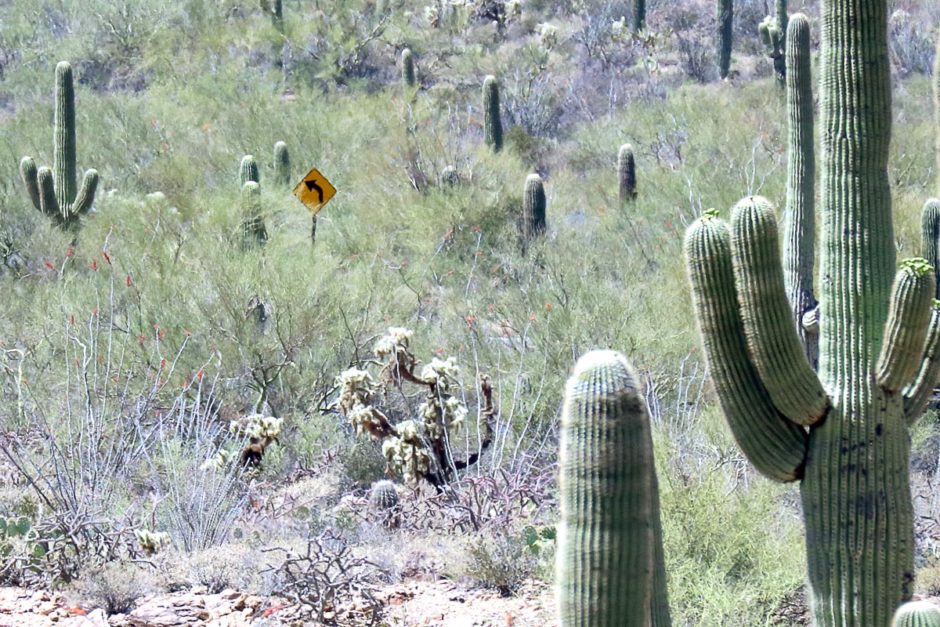
The cacti flourished at first but by the 1970s the population had largely died off thanks to bad weather luck and even “cactus poaching”. Some thought the majestic plants would die off altogether by the 1990s. Things turned around for the hardy structures, fortunately, and today the landscape in Saguaro National Park is becoming crowded again with mostly young but already-tall cacti.
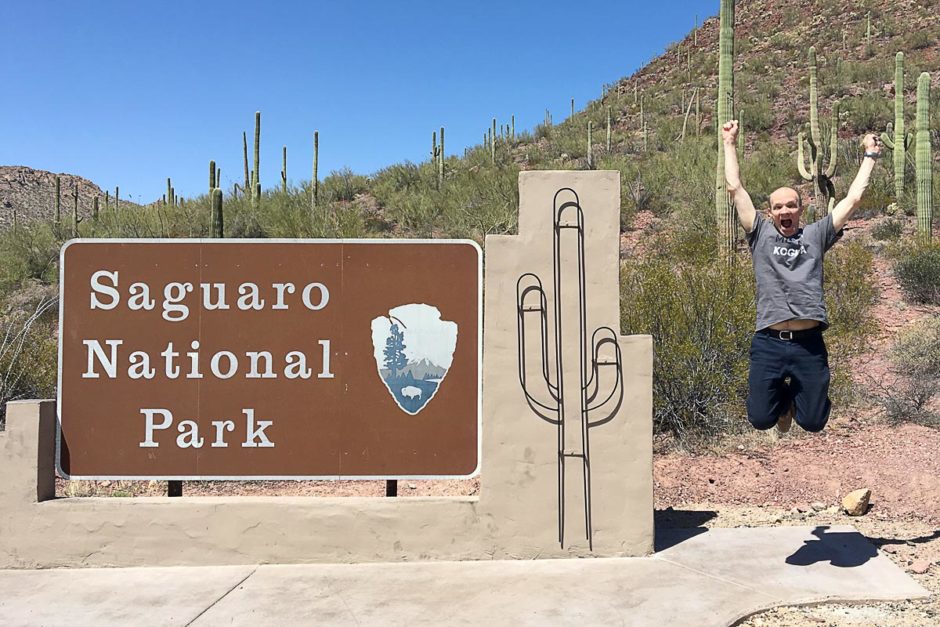
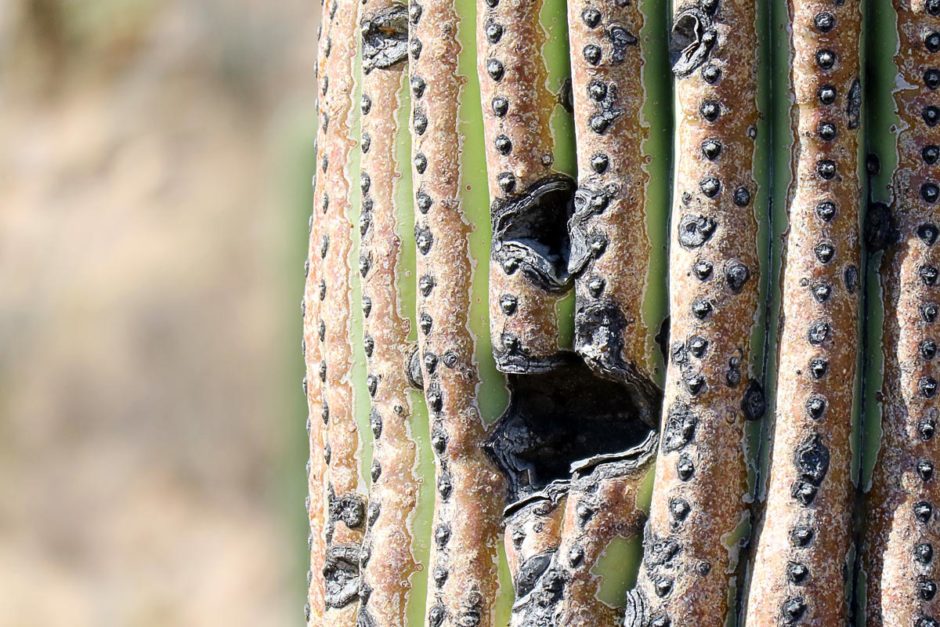
Sagauro National Park has an unusual layout: it consists of two separate portions lying east and west of the city of Tucson, Arizona. Masayo and I got a motel room in the city and spent one day in the west half, one in the east. Both halves include a visitor center, a nice scenic loop drive, and lots of wilderness reachable only by hiking. We confined ourselves to the scenic drives.
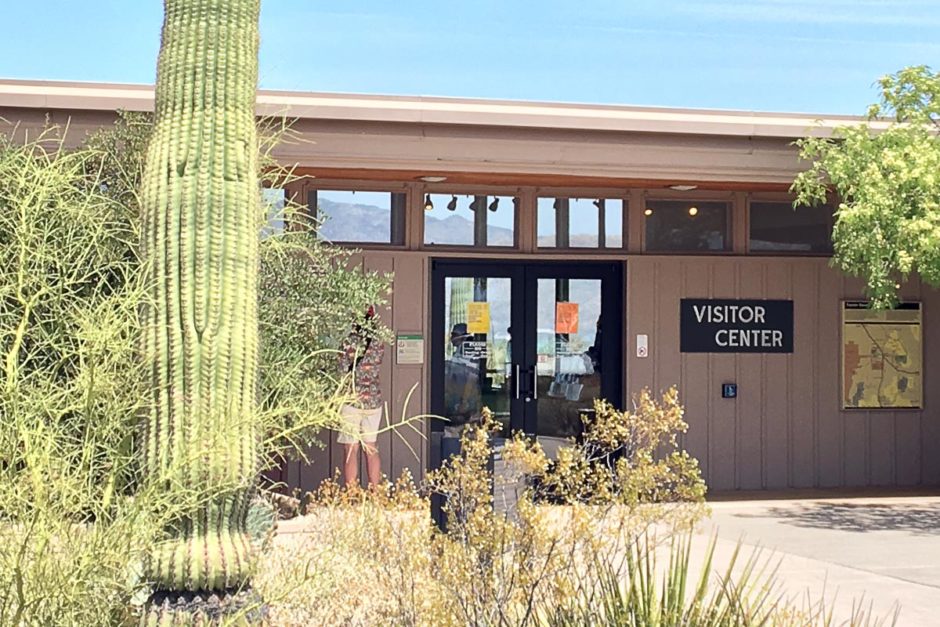
Saguaro West
Getting to the western part of the Park is a lot of fun in itself: West Gates Pass and Kinney Roads go through some very winding and thick saguaro forests, their tall green trunks littering the rocky hillsides.
Thus already amazed we entered the Park and stopped at the visitor center. Unbeknownst to us, it turned out to be National Park Week and, this weekend and next, admission to all parks in the US is free. Even better, since we buy stuff at each visitor center, everything in the gift shop was 15% off at Saguaro NP. We got our discount collector’s token and postcards and picked up a free map from the friendly ranger.
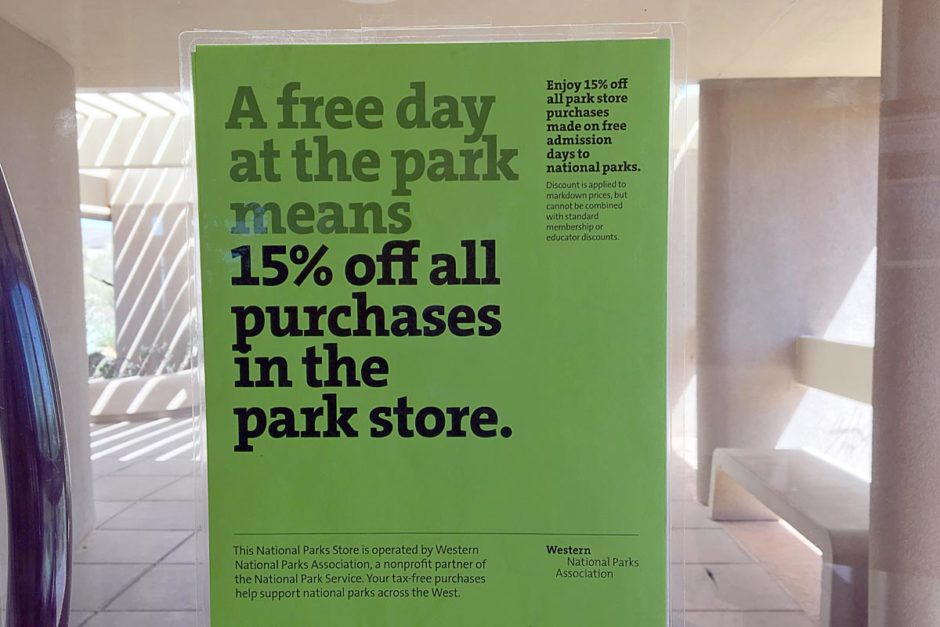
The cacti in the west Park are extraordinary and captivating. The cartoonists who created Wile E. Coyote shorts were really paying close attention when they visited. The cacti’s randomly-numbered arms stretched joyously to the heavens, their thick and tough construction freezing them into mysterious and perpetually delirious gestures.
Masayo and I stopped off for a picnic at a particularly scenic spot, a table with no shade perched at the edge of a wash that overlooked a valley. With thousands of saguaro cactus plants for company, we dove into our applesauce, olives, tuna salad and cracker snacks, cookies, figs, and desert-warmed water.
In the circumstances, the best meal ever.
Saguaro East
The next day turned out to be, to our surprise, Easter Sunday. We didn’t know what that might mean for crowds as we drove through the city of Tucson towards the east part of Saguaro National Park, but we needn’t have worried: there were several visitors but it wasn’t crowded.
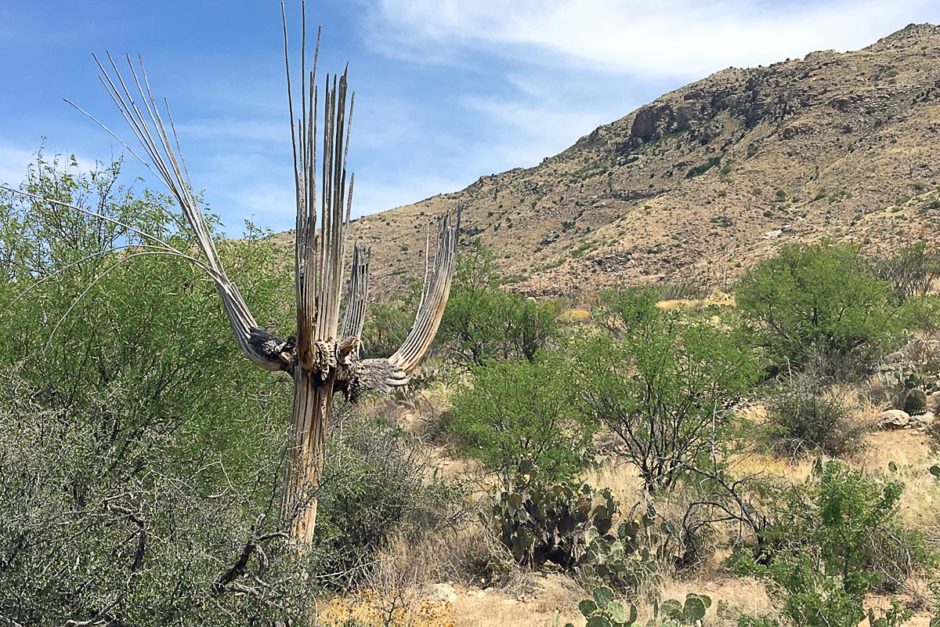
Creepy ghost cactus.
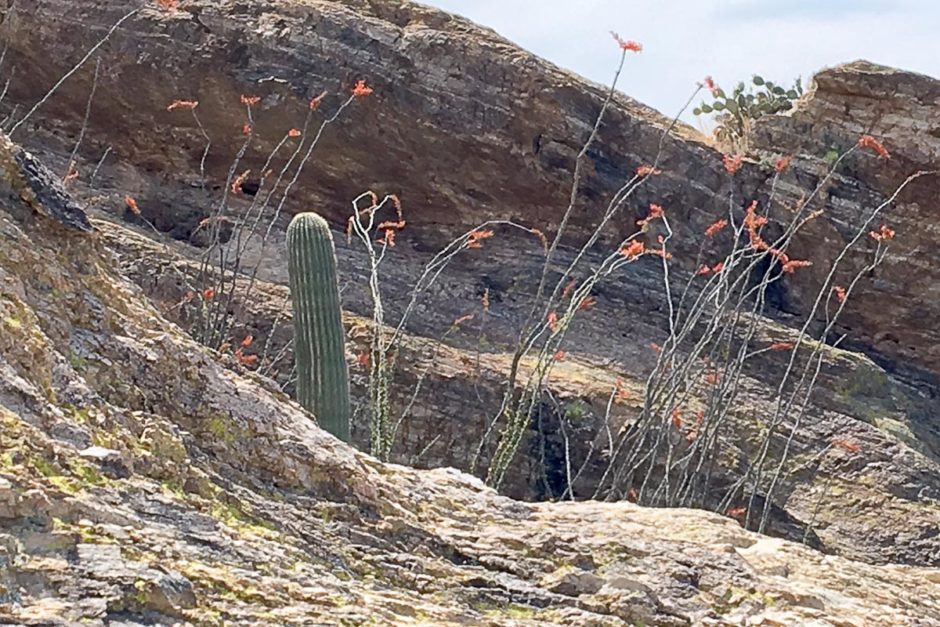
We took the scenic drive again, this time near the higher Rincon Mountains. The views are lovely along Cactus Forest Loop Drive but it’s in this region that the sad cactus blight of decades past is more apparent: the cactus plants are fewer and farther between in many places, and many have no arms yet because they’re still too young. (It is thought, but not definitively known, that saguaro cacti start sprouting arms around 60 years of age.) There are, however, a lot of prickly pear cacti, and many were in bloom with pink, orange, or yellow flowers bursting forth from their top edges.
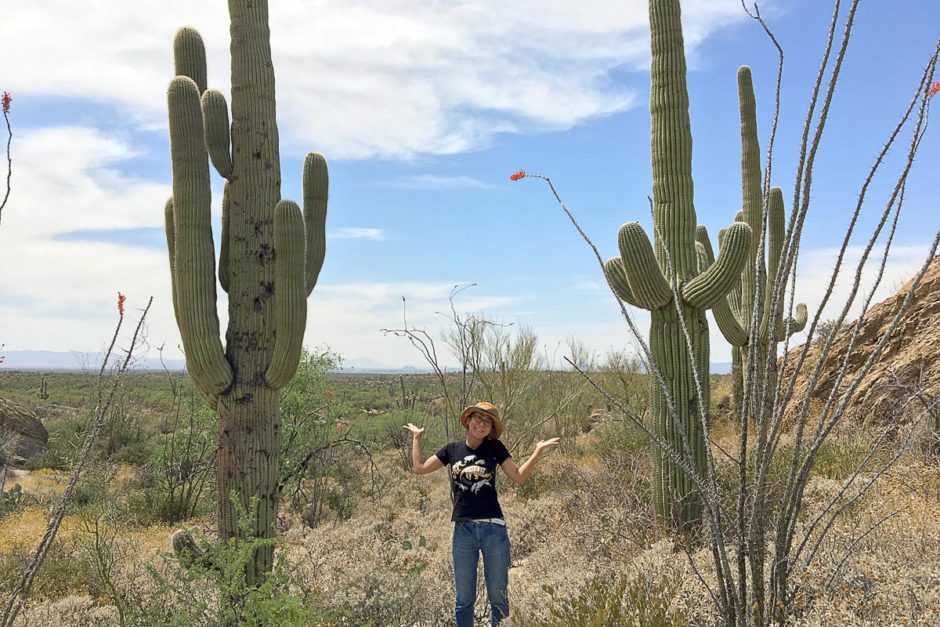
Again we found a nice spot for a picnic – covered, even! – and had southwest chicken wraps from a grocery store in Tucson with Chex Mix and our other usual fare. As with each picnic on this trip so far, under the circumstances – several species of cactus and other plants like ocotillo waving in the gentle desert breeze all around us – it was the perfect meal.
An illustrative and live-action glimpse into cactus life in two distinct but nearby regions: Saguaro National Park is an unusual and fascinating look at an ecosystem that is too weird to be true, too unusual to be seen elsewhere, and too large to be denied.
Insulin in the desert
I know insulin can be kept at room temperature while you’re using a specific pen, and I know that many diabetics have found that hot weather has strange effects on blood sugar.
So being T1 in a place like Saguaro National Park comes with its own unique challenges. For our picnics in the Park, I overthought things and made some not-so-great choices, but quickly smartened up and improved.
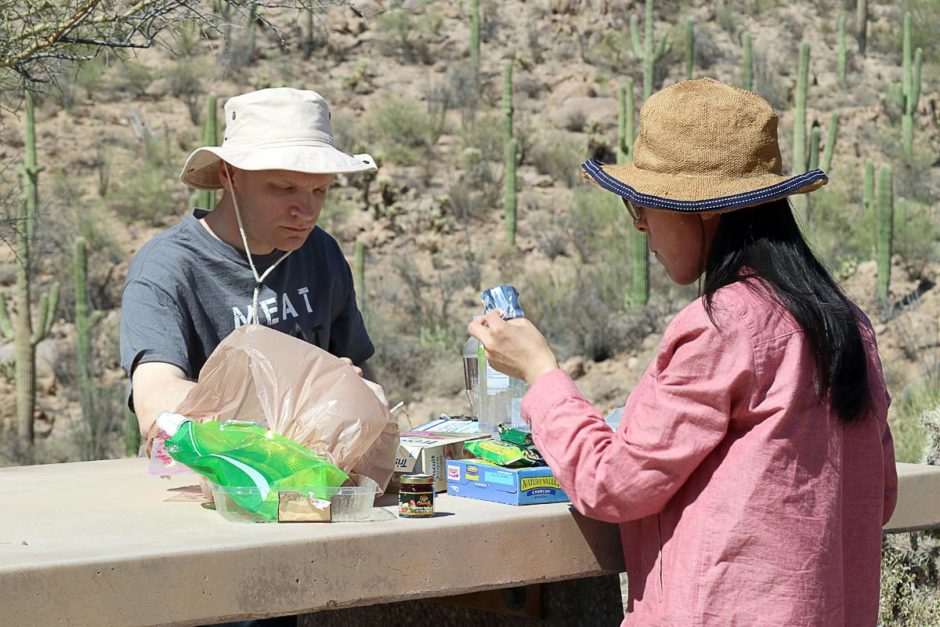
On the first day, I was a little high before the picnic lunch but, allowing myself to get paranoid about the heat, I took less insulin than I knew I needed. The result was a very high reading later at dinner time.
On the second day, I again was a little high before the picnic lunch but took the shot I knew I needed, and was fine the rest of the day. The heat wasn’t having any effect on me, probably because I wasn’t really doing anything in it: just sitting at a table, near the car, and not hiking or sweating a lot.
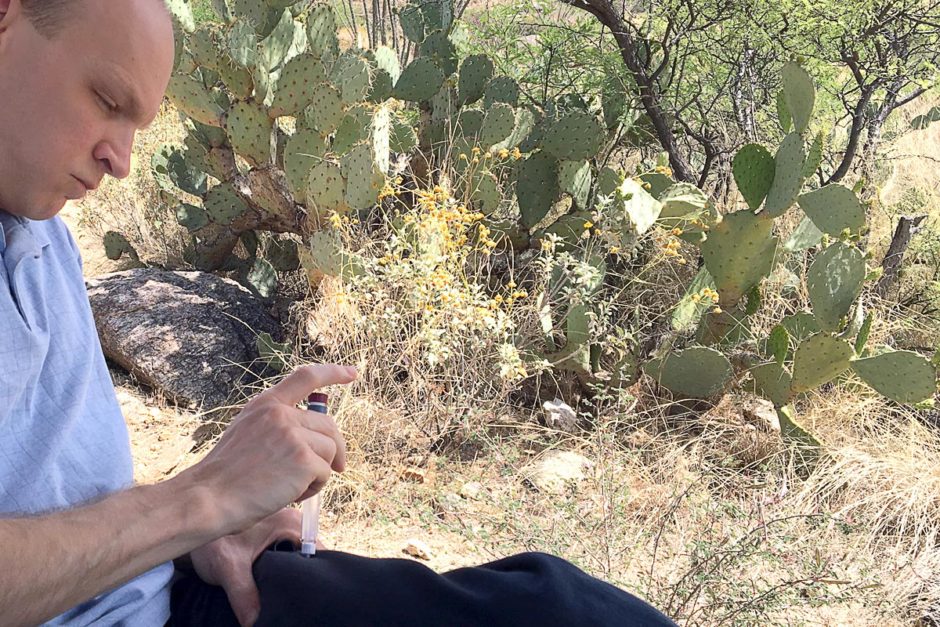
As for keeping the insulin warm, I’m less of a purist about that than some other traveling diabetics. I keep my big main supply in foil packs in a cooler (or in a motel room refrigerator) but the one I’m currently using is just kept with me. At the picnic, I put my insulin supplies bag (One Drop meter, Humalog and Tresiba pens) beside me on the warm bench but in my shadow.
I’ve never had an insulin pen go bad in the heat; I try to not let them get too warm too long but I don’t sweat it (ha!) too much.
Thanks for reading. Suggested:
- Share:
- Read: Day 12: Sand-blind at White Sands National Monument
- Join: Free email newsletter (info and early video access)
- Support: Patreon (much earlier video access and other perks)

Support independent travel content
You can support my work via Patreon. Get early links to new videos, shout-outs in my videos, and other perks for as little as $1/month.
Your support helps me make more videos and bring you travels from interesting and lesser-known places. Join us! See details, perks, and support tiers at patreon.com/t1dwanderer. Thanks!
Want more? Get the free newsletter
Join us! Sign up to my email newsletter to receive updates, behind-the-scenes info,
and early links to my new YouTube videos before everyone else
